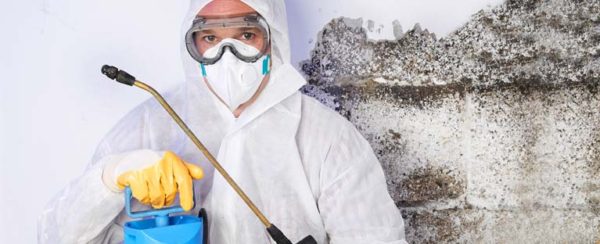
Mold can be a complex issue, depending on the severity and levels present within your home.
However, mold remediation used to be likened to that of fumigation, wherein all occupants of a house had to evacuate for days on end until the house was properly fumigated and ventilated.
Luckily for mold abatement, this is no longer the case. While it may be beneficial to evacuate the premises while a professional mold remediation team rids your home of mold, it is not necessarily required and is, in most cases, up to the occupants of the home.
Mold abatement treatments
Up until ten years ago, chemicals used in mold abatement treatments carried byproducts that were considered unsafe for human exposure. However, the Environmental Protection Agency (EPA) has since passed laws stating that all professional, licensed mold remediation services use non-toxic mold cleaning solutions.
It is a common misconception that mold removal services release a surplus of toxins into your home’s air, requiring that no unmasked persons be present during the mold remediation. But there are, in fact, a variety of viable, EPA-approved chemicals that will remove your mold. Plus, they are completely safe and biodegradable.
So, depending on the severity of your home’s mold, you may be able to stay inside during chemical treatments.
Further, professional mold remediation teams will almost always isolate mold-afflicted areas of your home with plastic screening.
This means that none of the chemicals used will reach outside the afflicted work area.
This sealing method also prevents mold spores from spreading to new areas of the home before they can be siphoned out, meaning mold spores will not spread to you, your family, or your pets during the mold remediation process.
Mold remediation process
Apart from the chemicals used, what does a mold remediation process actually look like, and why is it up to you whether or not to stay in your home during the process? Well, mold remediation consists of first a mold inspection.
During a mold inspection, a licensed team will use thermal imaging, a non-invasive method of identifying not only mold growths within your home, but helping to identify the source problem of your mold.
Thermal imaging determines where in your home mold is growing and spreading, which identifies which areas of the home must be sealed off for remediation treatment.
It used to be that remediation teams would have to poke holes in your walls to find where in your home the mold was growing and spreading. Luckily, those intrusive methods are gone.
Another reason why staying in your home during home remediation is a personal choice is because the process of mold remediation carries various stereotypes. These stereotypes, in many cases, are untrue. One of the most prominent stereotypes is smell.
Various molds carry their own smells, and a variety of chemicals used to treat mold during mold remediation also have their own unique smells.
However, the plastic screen sealing method previously mentioned ensures that no smells leave the afflicted work area, meaning that, as long as you are not within the direct mold remediation workspace, you should not come into contact with any adverse smells.
There are advantages to leaving your home during mold remediation, however. And most of the time, it depends on the severity of your household’s mold issues.
For serious cases of mold growth, the afflicted area may cover a much greater portion of your home, meaning that mold remediation teams may have to seal and treat a much greater space, making living alongside mold remediation teams much more difficult.
The first step in mold remediation is inspection, and after inspection occurs, you will know exactly what work needs to get done. Then, you can decide if it is right for you and your family to take a few days away from home so the mold remediation team can have the space they need to get the work done right.

